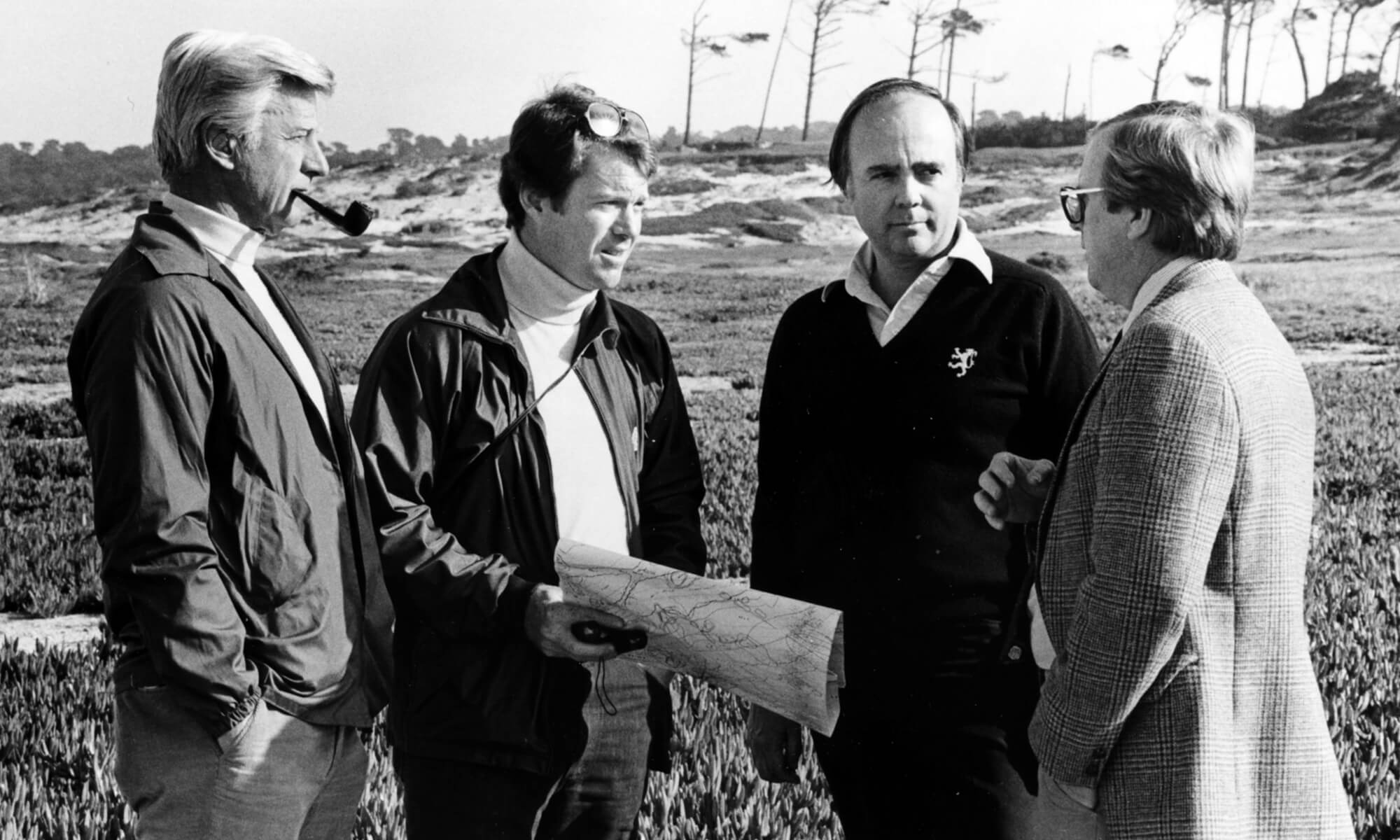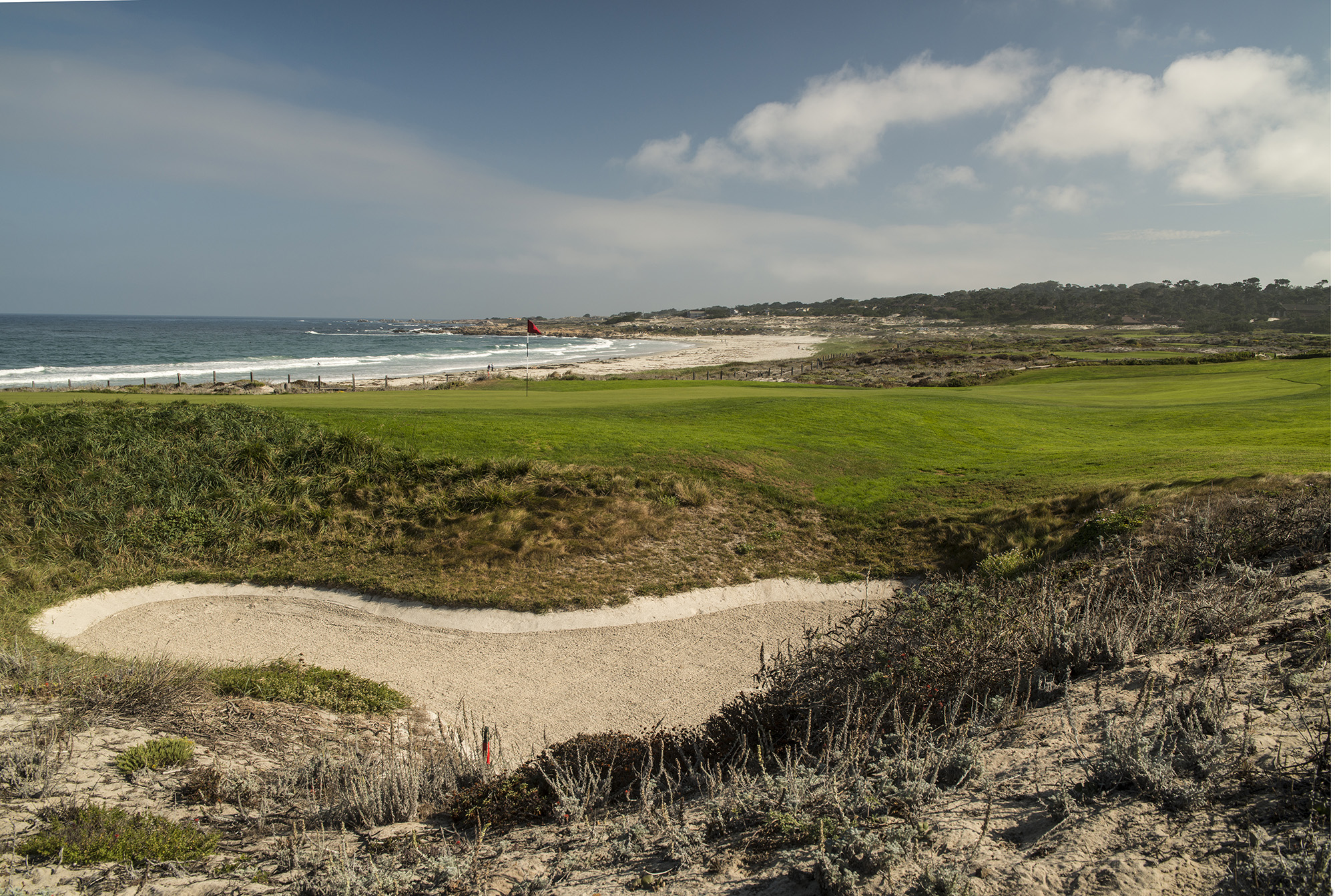Guest Post: How We Built The Links at Spanish Bay
A look back at the construction of one of California’s top-rated golf courses by Robert Trent Jones, Jr.
In the early 1980s, I competed to be the architect for neighboring Poppy Hills in the upper forest of Pebble Beach and won. While working on the Poppy Hills project, I also kept an eye on the former sand mine site along the north boarder of Pebble Beach near Asilomar.
I just had to make a run at this once-in-a-decade site, so I consulted with Sandy Tatum, my San Francisco Club friend and president of the USGA, who was a close friend of Tom Watson.
We all met and agreed to collaborate. The game was on.

Approving Spanish Bay
Tom, who had never designed a course, along with Sandy and our team, walked the site, pondering our plans while playing golf together several times – specifically at Cypress Point Club and the early holes of Spyglass Hill Golf Course.
We enjoyed many dinners at The Lodge, sharing our visions for the project, and eventually walked the site to determine the layout that ownership would need to approve in coordination with building the residences at The Inn at Spanish Bay.
With owner endorsement, our plans were submitted to Monterey County officials and the California Coastal Commission for approval. The golf course design was based on a links, dunescape concept, and the plan gained support from non-golfers because of the dune restoration at the existing mined-out area.
After a heavily attended, all-day Coastal Commission hearing, the project was approved by a close vote.
And then the fun began – actually getting to build a great new course.
Deciding the Design
Naturally, there were many passionate discussions onsite on fine golfing points.
Tom wanted smaller, well-placed bunkers and interesting spill-off chipping areas, and strong green contours reminiscent of the links courses along the seas of the British Isles.
Sandy favored more penal targets off the tee, particularly adding bunkers along the right side of No. 6, which we affectionately named “Sandy.”
I was interested in providing strategic options throughout the course, with wide but contoured fairways providing different angles for the approach shots to the green. Thus we introduced many split fairways, bisected by central bunkers such as holes 5, 10, 11 and 14.
The course is mostly open to the Pacific Ocean and the elements, the prevailing winds, or what we liked to call “invisible hazards.” We carefully thought through how the weather would affect every golf shot. We had a great time. Sandy said, “It was as though we had been chosen by the Pope to make a sculpture in the Vatican of golf.”

It was as though we had been chosen by the Pope to make a sculpture in the Vatican of golf.
During a lengthy meeting at The Lodge in July before it opened, near the time of the British Open, ownership decided to call the course “The Links at Spanish Bay,” based on what the area had been called for centuries.
Tom observed that he couldn’t wait to play it, and could “almost hear the bagpipes.” Thus, the bagpiping rituals at sunset and the logo were born.
Looking back, we miss Sandy Tatum and his extreme dedication to the game. When the bagpipes play in the evening, we know he is here with us in spirit at The Links at Spanish Bay.